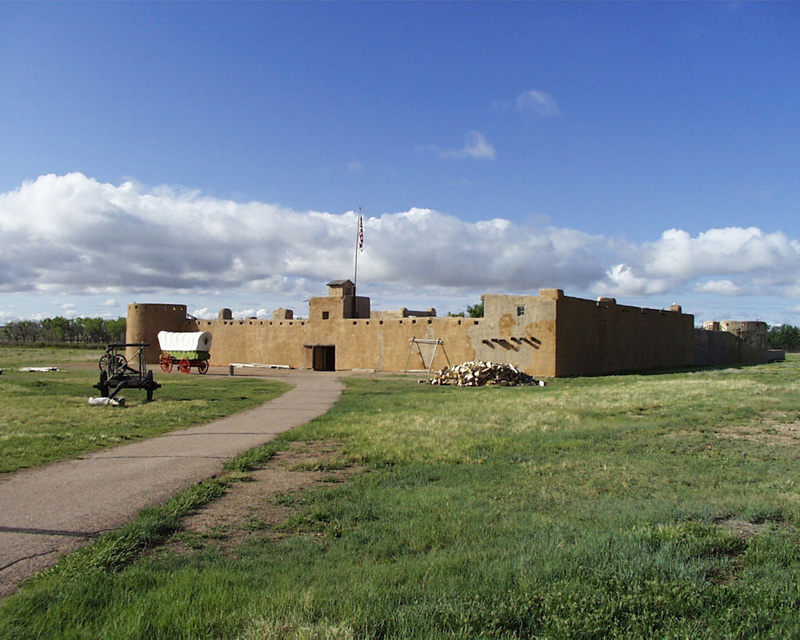Location
Located on 800 acres near La Junta in Otero County, CO
Date of Construction
Original post built 1833; 1976 reconstruction
History
Bent’s Old Fort is one of only 21 National Historic Landmarks in Colorado. The fort and its surrounding area is a significant cultural landscape in the development of Colorado and the United States. In the 1830s and 1840s, Bent’s Old Fort operated on the banks of the Arkansas River, then the border with Mexico, and was a principal waypoint along the Santa Fe Trail. The fort’s location near the Rocky Mountains attracted trappers as well as Native American hunters from the Cheyenne, Arapahoe, Comanche, Kiowa, and other tribes. As the 1840s drew to a close, escalating tensions between the white settlers and the Native Americans, along with a cholera epidemic, brought an end to the viability of the fort. In 1954 the site was transferred to the Colorado Historical Society, which began a series of archaeological investigations, discovering numerous artifacts and a general outline of the fort. The reconstructed fort was dedicated on July 25, 1976 and today, along with the surrounding cultural landscape, operates as a historic unit of the National Park Service.
Project Description
This project created a non-motorized, pedestrian-only interpretive trail within the park offering opportunities for visitors to learn more about the history of this important historic cultural landscape. Until this interpretation was completed in 2009, interpretation was limited to the fort itself and did not address the importance of the historic landscape (including the Santa Fe Trail) surrounding it. The interpretive loop now has trailheads or entry points at the existing parking lot and near the fort and generally runs along the perimeter of the park. Design of the trail took into consideration a number of factors including interpretive opportunities, visual impact, resource protection, sustainability, and the site’s character. Interpretation along the trail is provided by wayside exhibits and a brochure for a self-guided experience. This project provides a more comprehensive interpretation of the site’s stories and promotes a greater understanding of the full scope of historical events occurring both within and immediately outside the walls of Bent’s Old Fort.
Project Team
The project was financed through the National Trust for Historic Preservation, Otero County, the National Park Service, and the State Historical Fund.




